Fashion Design Inspiration: Guo Pei
Pieces from Guo Pei’s Elysium collection (S/S 2018), which spoke to the concept of soul and a spiritual paradise from her dreams.
“I use the weight of the clothes, the height of the shoes, and the unwieldiness of the dress to represent the inner strength and confidence of a woman.”
For my birthday this year, I drove up to Northwest corner of San Francisco, home to a million cypress trees, Land’s End, and the Legion of Honor museum. I walked through the striking colonnade that envelopes the Legion of Honor, but instead of hanging out in the courtyard taking photos, I strolled into the museum itself, ready to spend the afternoon transported into into an alternate fashion reality 👗👠✨
Guo Pei is a Beijing-based fashion couturier who may be best known in the U.S. for Rihanna’s 2015 Met Gala ensemble. However her prolific career has spanned over two decades in China and in Paris haute couture, and a number of her most stunning and influential pieces were being presented at this Couture Fantasy exhibit. I had seen some photos that got me excited, and came alone with my notebook and pen to try to make sense of so much beauty.
Being Chinese-American, I feel a personal connection to Guo Pei and many of the themes motivating her work. It’s a unique layering of trends and styles that are traditionally Chinese, modern Chinese, and influenced by the West. Her work and artistic approach are deeply rooted in her heritage and ever-evolving with contemporary fashion practices, her artistic innovation, and transcultural perspective.
Da Jin (Magnificent Gold) from the Samsara collection (2006), her first haute couture show.
Chinese Bride collection (2012) adds a touch of modernity to traditional Chinese clothing.
Alternate Universe (F/W 2019/2020) features Greek mythology and Aesop’s fables.
The old
Guo Pei grew up hearing stories about clothing from her grandmother’s generation growing up in the Qing dynasty, where elaborately embroidered robes were the pinnacle of fashion. At the end of the imperial era, the Cultural Revolution forbade richly embellished clothing in favor of strict uniformity, and the traditional craft of embroidery was almost lost. Today, Guo Pei’s studio employs hundreds of craftspeople, most of whom are embroiderers to practice traditional embroidery and bring the technique into the modern era. Some other commonalities observed in her work that represent Chinese tradition include:
Headdresses and tassels from the Qing imperial dynasty
The colors yellow and red. Yellow was once reserved only for the emperor himself.
Silk and satin fabrics
The mandarin collar and cloud collar necklines
The qipao silhouette
Motifs: dragons, phoenix, clouds, flowers, the lotus
Distinctly Chinese ornamental objects: folding fans, porcelain, Chinese brushstroke paintings
The new
In contrast to tradition, Guo Pei seeks inspiration from contemporary Chinese fashion trends (post-Culture Revolution) and diverse western influences. This juxtaposition is what makes her work stand out as it offers a fresh perspective and twist on familiar themes. The modern motifs of her pieces include:
Materials like fur, printed silk, and photographic weaving from new Japanese textile technology
Styles like the pantsuit, shorts, the crop top, corsets, shorter hemlines, backless and strapless necklines, thigh-high gaiters
Showing skin
Figure hugging silhouettes
Swarovski crystals
Victorian-era European trends: low necklines, elongated waist, the bustle
Outside of fashion, Guo Pei also incorporates elements from theater and the botanical world into her collections. Runway shows are not just models walking the pieces down a catwalk — they use set design, production, music, and the significance of the location to tell a complete story in a theatrical way.
My favorite collections
East Palace (S/S 2019) pays homage to the Qing dynasty and Chinese traditional craftsmanship, mixing Eastern cultural elements with Western textiles.
Legend of the Dragon (2012) features pieces that incorporate opulent embroidery directly influenced by China’s imperial era. This is my favorite collection, as it speaks so honestly to Guo Pei’s personal brand and admiration for craftsmanship. I love to see a dragon robe, something so traditionally male and intended for the Chinese nobility, reimagined for the modern woman. Also I cannot get over how beautiful this pink gown is.
Legends (S/S 2017) revolves around a Swiss cathedral and honors women in power in European history, using motifs such as gold armor, the halo, the crown, and Catholic murals. It reminds me of Heavenly Bodies in 2018, one of the best Met Gala themes.
Brought my parents to see the exhibit at the Bowers Museum in Santa Ana and they loved it.
Courtyard (S/S 2016) was Guo Pei’s first Paris haute couture show, set in a Chinese royal courtyard. The collection combines elements of Chinese traditional clothing (tassels, cloud shoulders, pankou knot buttons) with Western dresses and jackets.
Encounter (F/W 2016) showcased more modern and wearable pieces, adorned with features, sequins, and European high society silhouettes.
Elysium (S/S 2018) is all about the joy of life in a botanical sense. Flowers serve as the central design element, and a number of pieces are woven with bamboo. Blues, golds, and whites represent the ocean, the sun, and purity.
1002 Nights (2010) examines women’s courage and persistence, inspired by the Arabian Nights folk tales. Some of my favorite pieces are the “porcelain” dresses seen below. Something so traditional and fragile reimagined into a modern dress that moves with the wearer.
I look at a lot of art, but rarely feel a visceral reaction to it. Getting to experience Guo Pei’s art in-person is literally breathtaking. I’d never heard anyone audibly gasp as they walked up to an art piece. The grandeur of every dress from afar and immaculate attention to every detail up-close is truly an experience. I watched as older women around me debated sewing techniques for the Victorian-inspired full circle skirts. A group of teenage girls excitedly discussed which dress was their favorite. Even a security guard commented on how the museum lighting didn’t do these pieces justice. Everyone was smitten by Guo Pei’s work.
If you ever get to see her work in person, admire the details of every piece from all angles. After you pick your jaw off the ground from the initial awe of the dress itself, check out the underside of the skirt, the detail inside the platform heels, the earrings, earpieces, headpieces, rings, bracelets. They complete the narrative.
Couture is art. It’s sculpture. It’s theater. It’s proof that clothing, something so familiar and ordinary to the everyday person, can be reimagined into something spectacular. Fashion plays with light, shadow, and motion. It tells a story of class, cultural tradition, and history. Guo Pei’s work is an amalgamation of culture and artistic influences that was such a privilege to witness. It’s made me a much bigger fashion nerd, and I look forward to following her career year after year.
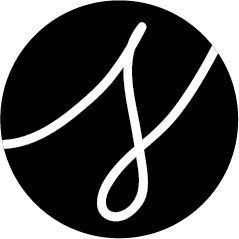
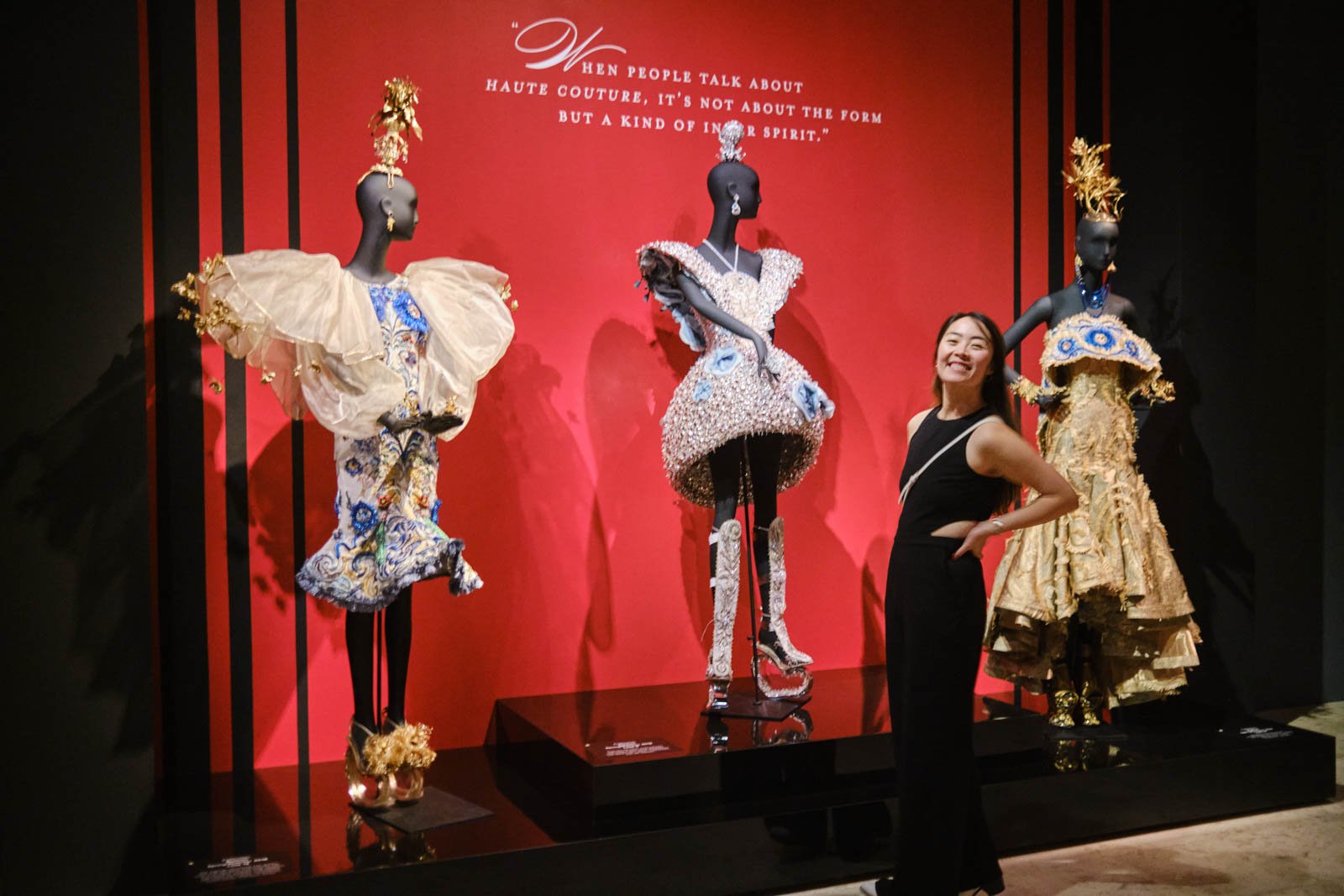
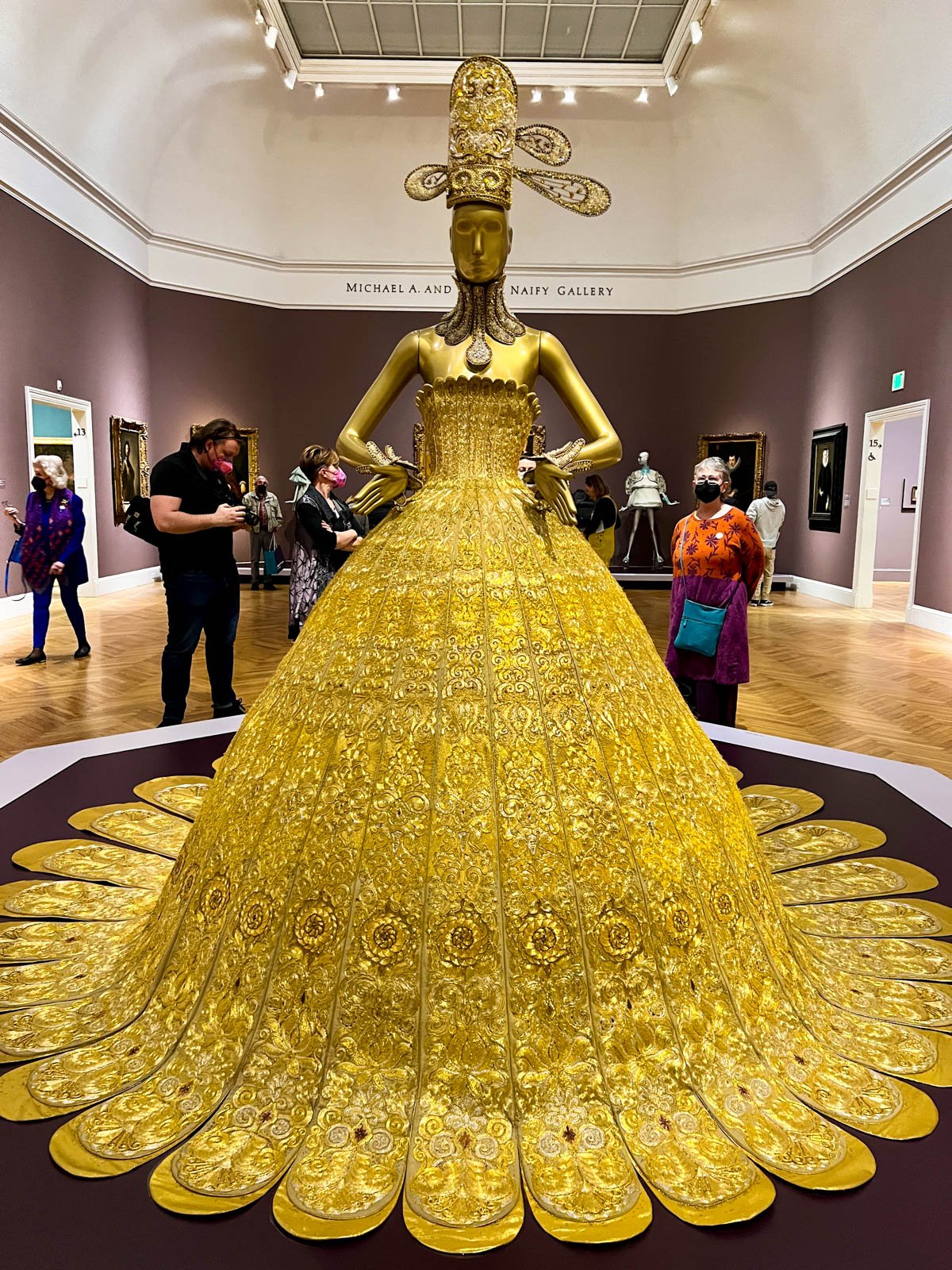








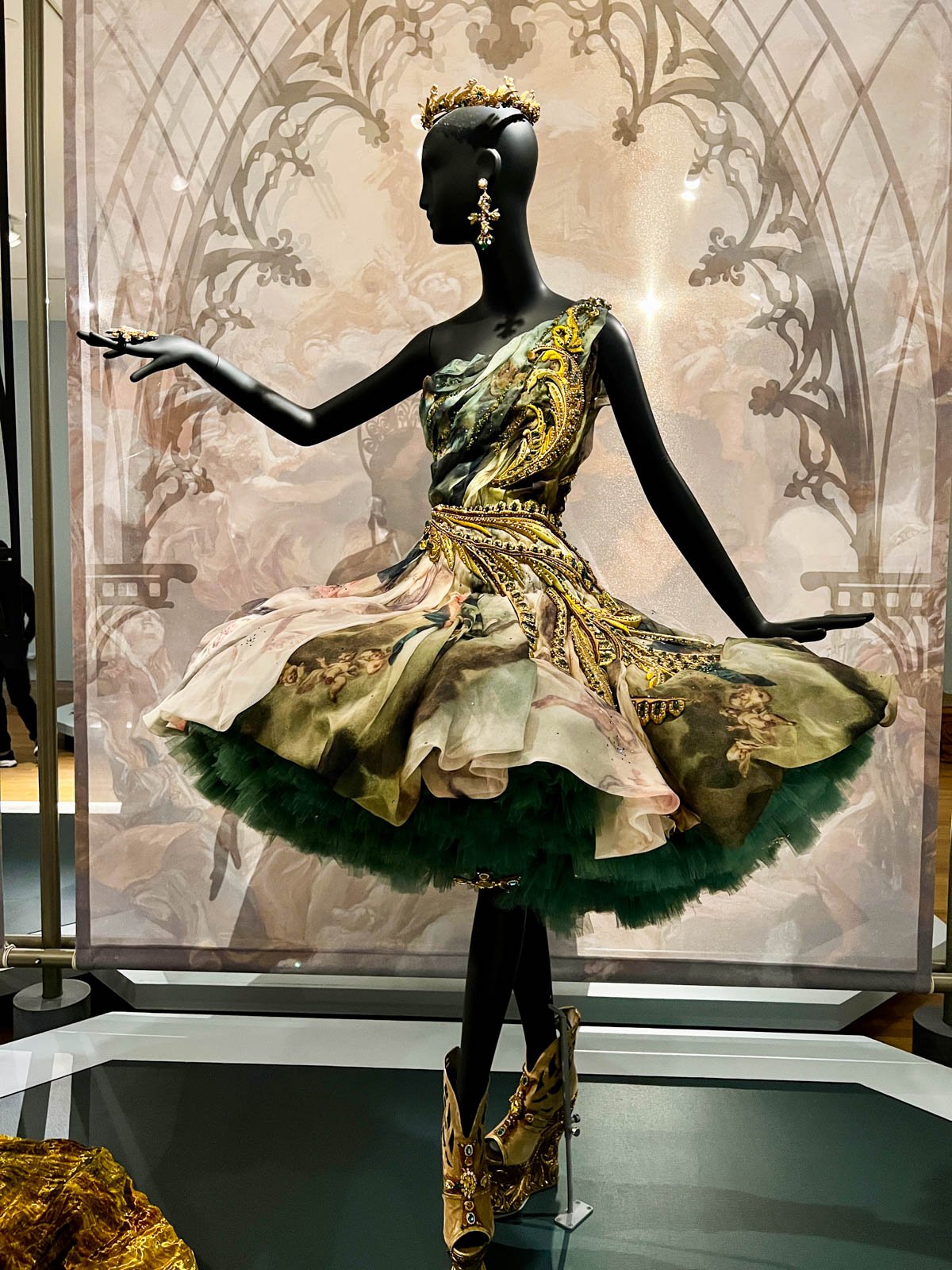













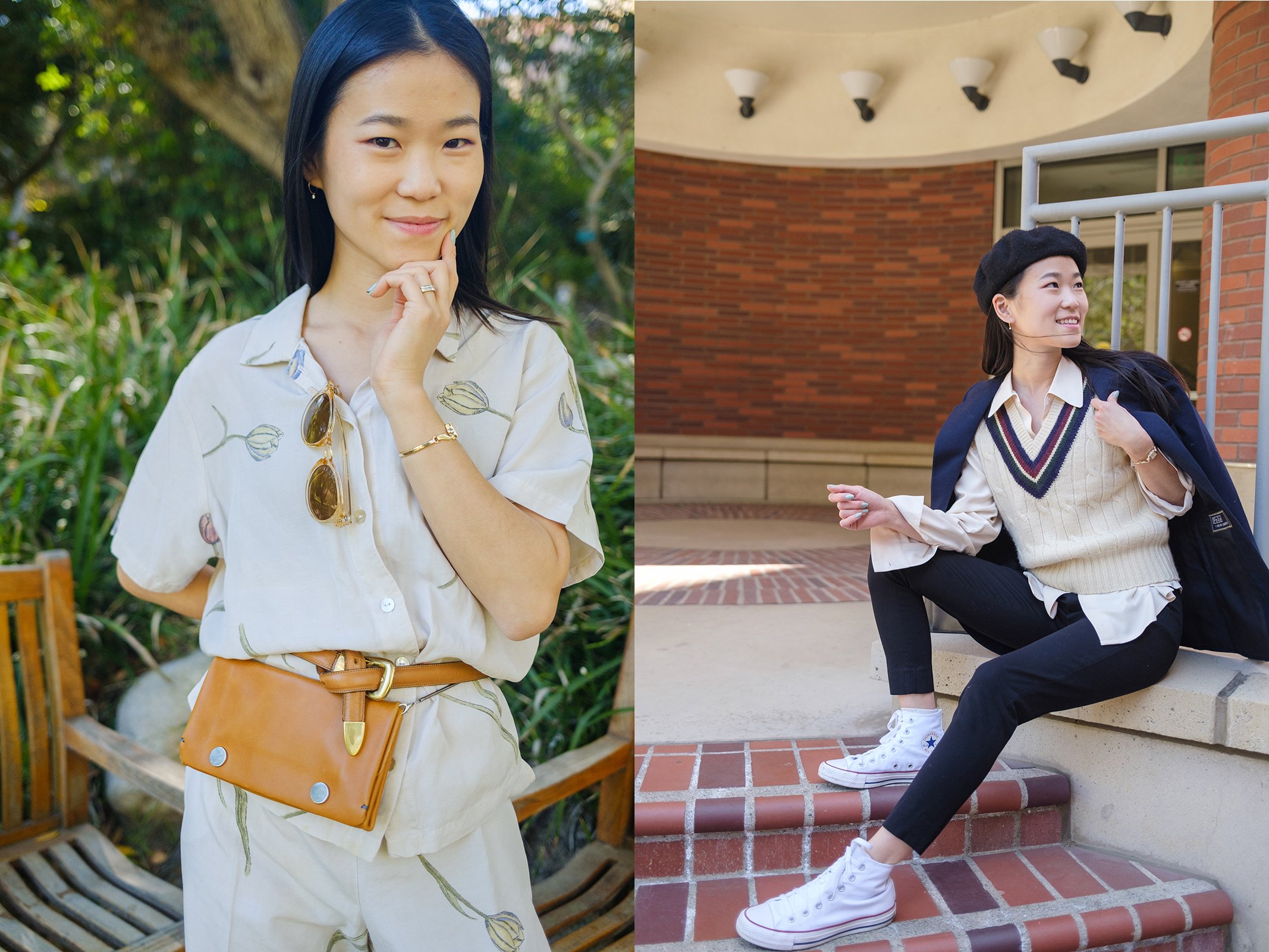

















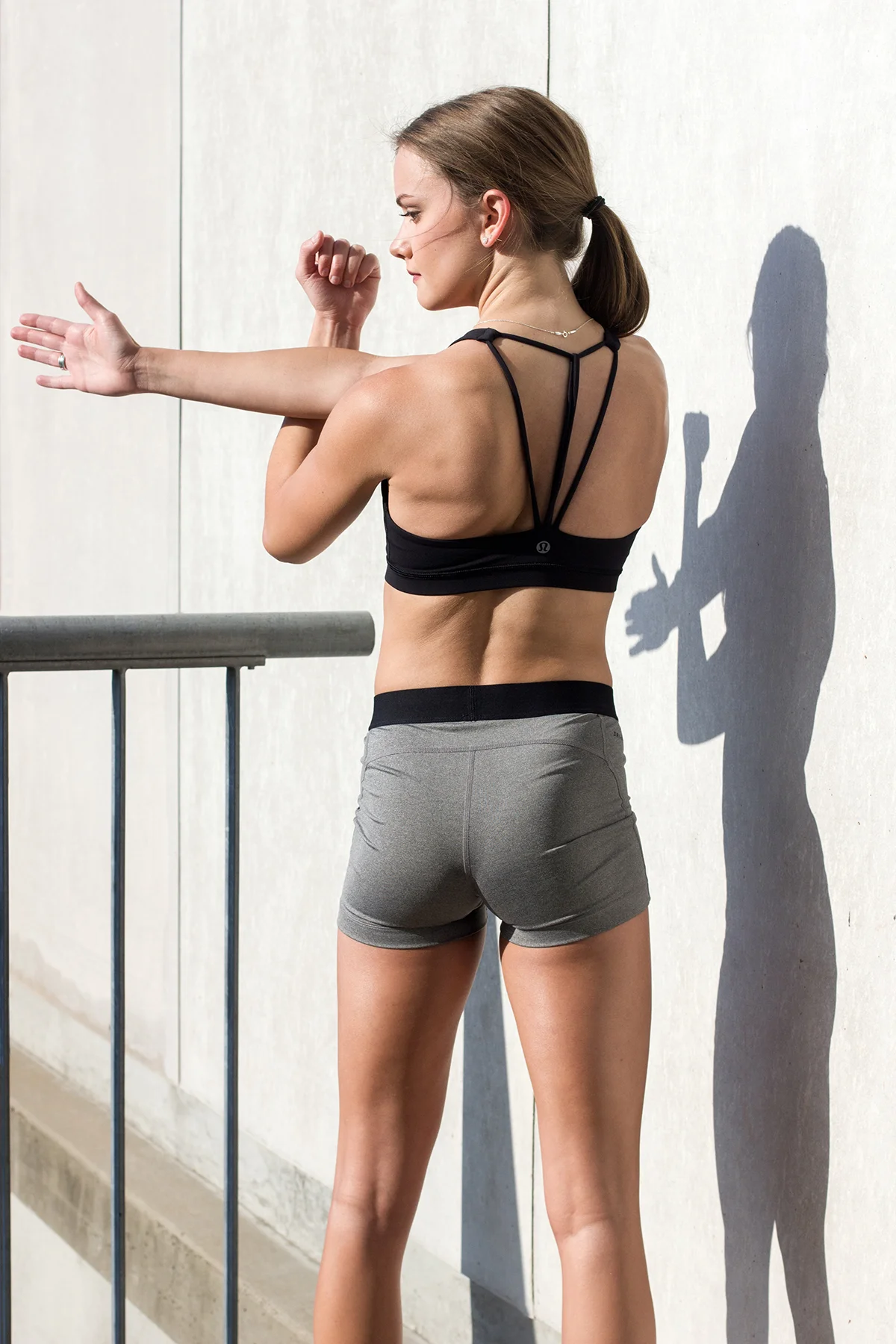









Clothing is powerful, and I’m serious about my personal style. A look into how I used a scientific approach to determine style principles and personalized outfit formulas.